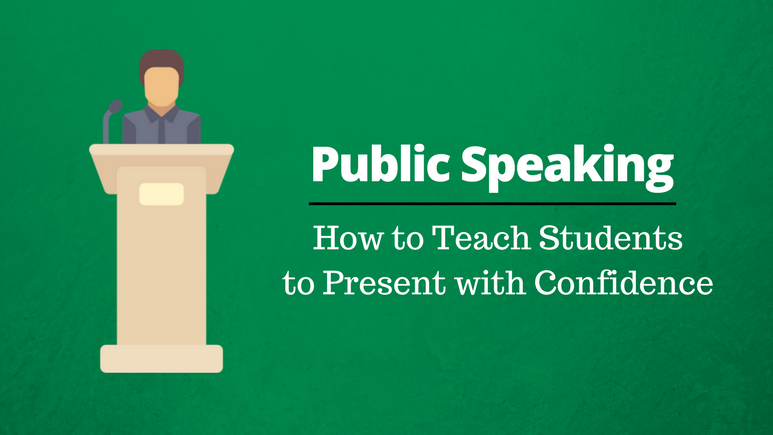
Studies have found that most people would put public speaking before death in a list of their biggest fears. That means that at a funeral, most people would rather be in the coffin than giving the eulogy!
Whether public speaking produces anxiety for you or not, it is a life skill that is invaluable in college and the workplace, and that will help you get further in any career.
As our world becomes more and more globalized, our students are competing with students not just around the country, but around the world for the best jobs of the future. Having strong public speaking and presenting skills can help a candidate stand out when it comes to securing a competitive job or landing a promotion.
From presentations in college to job interviews, pitching ideas at work, and networking events, having a strong foundation in public speaking and presenting skills will serve students for the rest of their lives.
And in an increasingly technology-based society, public speaking means not only communicating ideas verbally, but also supporting ideas visually with effectively crafted presentations.
So how can teachers foster and promote the development of these skills in their classrooms? There are plenty of teaching strategies and activities that can help take the anxiety out of speaking in front of the class while gradually building students’ public speaking and presentation skills. Try out some of our favorites below!
Speed Dating
This is a great way to get students started presenting their ideas in a low-stakes environment. Set up desks in two long rows facing each other. Students sit facing one partner and have 1 minute to discuss their answers to a question. Questions can range from personal (What’s your favorite season and why?) to more serious (Should cell phone use be allowed in school?). Once both partners have shared, one row of students stands up and moves one seat to the left, leaving all students with a new partner before the next question is presented. The process repeats until students have had a chance to talk with multiple partners about a variety of topics.
Peer Evaluation
It’s a great idea at the beginning of a school year to develop a rubric for public speaking skills. The rubric should include aspects of public speaking such as eye contact, tone, volume, and fidgeting. There are plenty of great rubrics online that vary depending on grade level. You can introduce skills to students one at a time and have them practice, evaluate each other, and give respectful feedback on different aspects of the rubric. This is a great way for students to get feedback on their speaking, but also gives the audience a purpose for listening.
Flawed Speeches
This is a fun way to reduce anxiety for students speaking in front of the class. Secretly give the student who is about to speak one aspect of his or her speaking that should be intentionally flawed. Maybe the student should say “ummmm” in between every sentence or fidget with her hands. While the student is speaking, the rest of the class has to identify what part of the rubric the student is intentionally doing incorrectly. By having something to intentionally do wrong, students are less likely to be nervous about messing up on their own.
Impromptu Speeches
Prepare a series of engaging questions that students could talk about in front of the class (even better if these relate to content you’ve recently taught or are about to teach). Cut the list of questions into strips. Students take turns drawing a question from the strips and then have 2 minutes to prepare and 2 minutes to give an impromptu speech answering the question. You can coordinate the timing so that one student is presenting while the next is preparing to make transitions smooth and efficient. This can also be done in smaller groups initially for a less stressful experience.
Presentation Skills Practice
Teach presentation skills with iAcademy’s Present It! Course. This course includes 20 self-paced PowerPoint projects dealing with themes that are interesting to teens. These sequentially organized projects teach students to create professional PowerPoint presentations in a fun and engaging format gradually building up the complexity of their presentations.
These are just a few ways to build public speaking and presenting skills into your class curriculum. With regular practice, students will gradually build confidence in their ability to address an audience and will eventually even look forward to it!



Leave a Reply